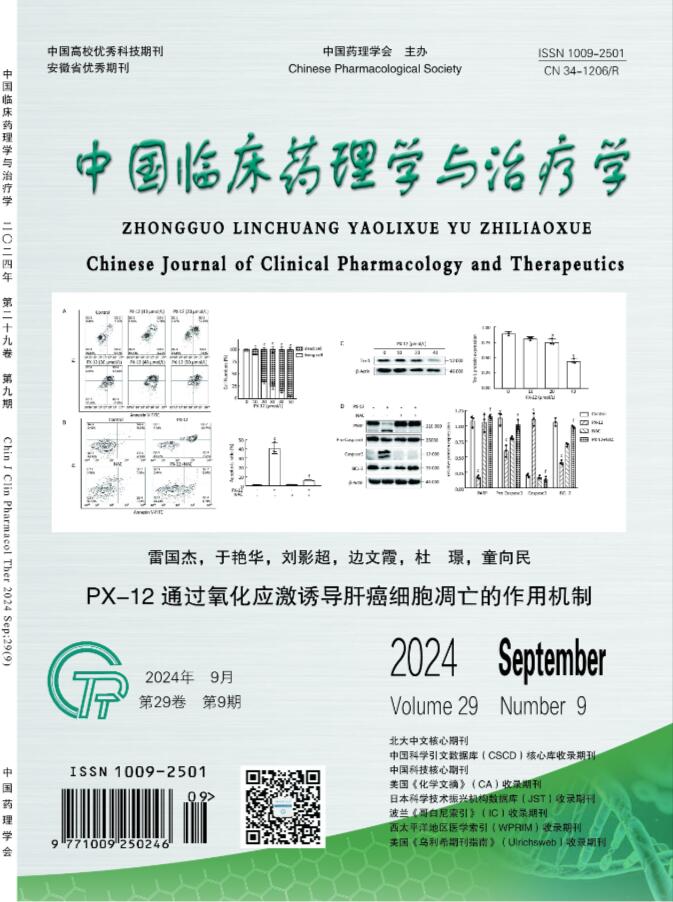Analysis of the effective components and mechanism of Yufang Fangji II for prevention of COVID-19 based on UHPLC-Q-TOF/MS and network pharmacology
引用次数: 0
Abstract
AIM: The main chemical components of Yufang Fangji II (Hubei Fang) of COVID-19 were studied systematically and combined with network pharmacology to provide a reference for the study of its effective substances. METHODS: Ultra high-performance liquid chromatography quadrupole time of flight mass spectrometry (UHPLC-Q-TOF/MS) was applied to identify the absorbed components of the prescription in rat plasma. TCMSP database and Swiss Target Prediction data platform were used to predict the target of the identified blood components, and network visualization software Cytoscape 3.7.2 was used draw the association network diagram, and GO enrichment analysis and KEGG pathway enrichment analysis were conducted for the key targets. With the help of CB-Dock online molecular docking platform, the molecular docking of key targets and blood entering compounds was carried out, and the docking combination with good affinity value was displayed by ligplot software to verify the preventive effect of Yufang Fangji II on COVID-19. RESULTS: A total of 52 chemical components identified in the prescription, in which 13 components were absorbed in the rat plasma as the prototype, and they were from Astragalus membranaceus, Atractylodes macrocephala, Saposhnikoviae Radix, Lonicerae Japonicae Flos, and Citri Reticulatae Pericarpium, respectively. These compounds were recognized to act on 17 core targets, including mapk3, TNF and other targets related to inflammation, MPO and other targets related to oxidative stress, VEGFR, KDR and other targets related to vascular endothelium. The results of molecular docking showed that the absorbed components had good binding activity with the key targets. CONCLUSION: Compounds in Yufang Fangji II are involved in regulating inflammation, oxidative stress, vascular and cellular physiological activities, which have preventive effects on COVID-19 through regulating IL-17, PI3K Akt, MAPK and other pathways.基于UHPLC-Q-TOF/MS和网络药理学的育方防己二世预防新冠肺炎有效成分及作用机制分析
目的:系统研究新型冠状病毒(COVID-19)玉方防剂II(湖北方)的主要化学成分,并结合网络药理学,为其有效物质的研究提供参考。方法:采用超高效液相色谱-四极杆飞行时间质谱法(UHPLC-Q-TOF/MS)鉴定该方在大鼠血浆中的吸收成分。利用TCMSP数据库和Swiss Target Prediction数据平台对鉴定的血液成分进行靶标预测,利用网络可视化软件Cytoscape 3.7.2绘制关联网络图,对关键靶标进行GO富集分析和KEGG通路富集分析。借助CB-Dock在线分子对接平台,对关键靶点与入血化合物进行分子对接,并通过ligplot软件显示亲和价值较好的对接组合,验证雨房防剂II号对COVID-19的预防作用。结果:共鉴定出52种化学成分,其中以大鼠血浆为原型有13种成分被吸收,分别来自黄芪、苍术、三七、金银花和柑橘皮。这些化合物作用于17个核心靶点,包括mapk3、TNF等与炎症相关的靶点、MPO等与氧化应激相关的靶点、VEGFR、KDR等与血管内皮相关的靶点。分子对接结果表明,吸收组分与关键靶点具有良好的结合活性。结论:郁方防己II中化合物参与调节炎症、氧化应激、血管和细胞生理活动,通过调节IL-17、PI3K、Akt、MAPK等途径对COVID-19具有预防作用。
本文章由计算机程序翻译,如有差异,请以英文原文为准。
求助全文
约1分钟内获得全文
求助全文

 求助内容:
求助内容: 应助结果提醒方式:
应助结果提醒方式:


